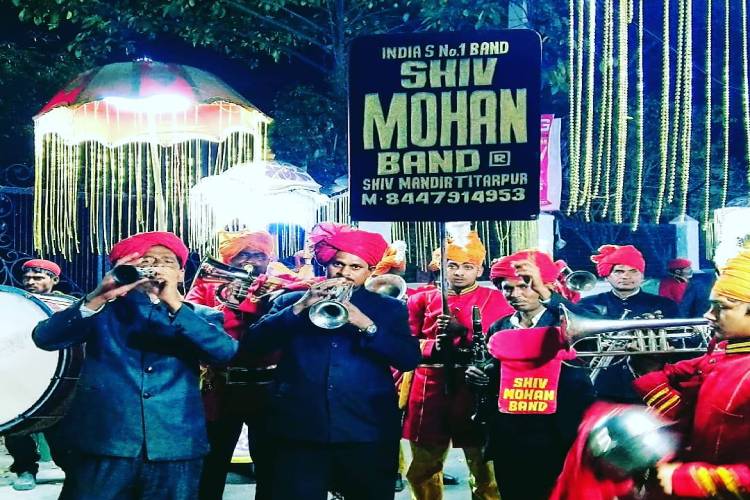Introduction
Indian weddings are synonymous with celebrations. The 4-5 days of wedding processions showcase a mix of emotions like joy, laughter, tears of happiness, etc.
One of the events of the wedding band in Delhi is Baraat. A groom’s wedding procession is known as baraat. In Indian communities, it is traditional for the bridegroom to travel with his family to the wedding location on a mare.
The baraat’s trip starts at the groom’s residence and proceeds to the wedding location. Family and friends of the groom are present at this wedding procession. The celebration includes dancing and music and the trip to the wedding location. Most frequently, music is played by a brass band, dhol wale, or doll player. The groom rides a mare (a white horse), and the wedding party follows him. An elephant or an automobile may also be present.
Since the dawn of civilization, marriage has been a part of every community’s history, and the same is true with baraat/barat. The baraat has been impacted by the significant changes in marriage ceremonies.
Two cultures in India, Rajputana and punjabi dhol wala in delhi place great importance on the bridal procession. But many other groups observe the baraat way of life with the same zeal. The baraat has unique customs that vary depending on the areas of civilizations. In some traditions, the groom’s head is wrapped in sehra, a specific veil for his face made of beads, flowers, or other materials, before the bridal procession even begins. In some communities, the man makes his wedding day journey on the back of an elephant. If the wedding location is too far from the groom’s home, the baraat stops. It begins in front of the bridegroom’s house and lasts for a while. When it gets close to the wedding location, it pauses. After a little pause, the wedding procession resumes and arrives at the site.
The baraat, or wedding procession, has seen significant alteration over time. The baraat of every community has seen numerous changes, from the time of celebration to customs. The baraat is a popular dish in most Indian communities, and most of these varieties are similar to the Punjabi kind.
What is the type of Indian Baraat in North- India?
- Rajput- Mostly male family members and friends make up the Rajput Baraat. In most circumstances, it’s a formal event. The groom is encircled by musicians. While traveling to the wedding location, there isn’t any dancing in the streets. The groom wears a golden sherwani, churidar pants, and a pair of jootis, while most baraatis wear sherwanis. The orange color of the groom’s turban. In addition to carrying a sword, he rides a mare (a white horse) or an elephant.
- Punjabi- In a Punjabi baraat, both men and women enjoy the trip from the groom’s house to the wedding location. Family and friends begin dancing at the groom’s house and continue till the wedding location. The baraatis and musicians with dhol wale lead the wedding procession. It is a flashy, joyful, and intense affair. The Sehra, a cloth akin to the Rajput Baraat’s, is tied before the wedding ceremony begins. The goom’s friends and family members wore light pink turbans throughout the wedding procession. The exquisite sherwani, made of white or golden fabric, is worn by the groom. Additionally, the groom can wear a crimson, green, or purple sherwani.
Conclusion
The baraat generally begins at the groom’s residence (or at the groom’s side) on the wedding day. Despite having no religious meaning, it is a custom and one of the most enjoyable customs.
Make your entry splendid with Shiv Mohan Band, the most renowned and best wedding band in Delhi. We are multiple service providers under one company. Our catalogue of services constitutes band, lighting, dhol wala in delhi , Ghori, flower, function band , vintage car, and many more.

